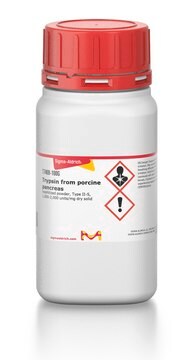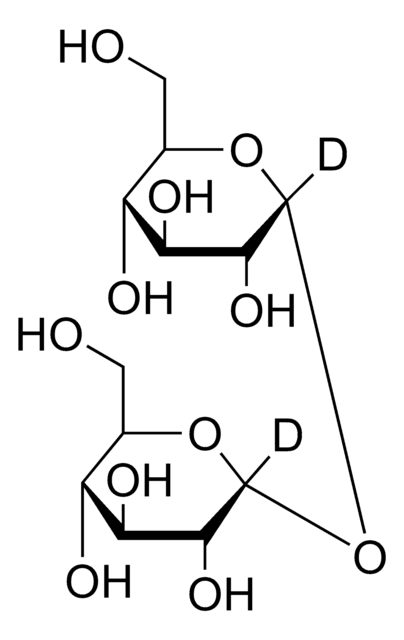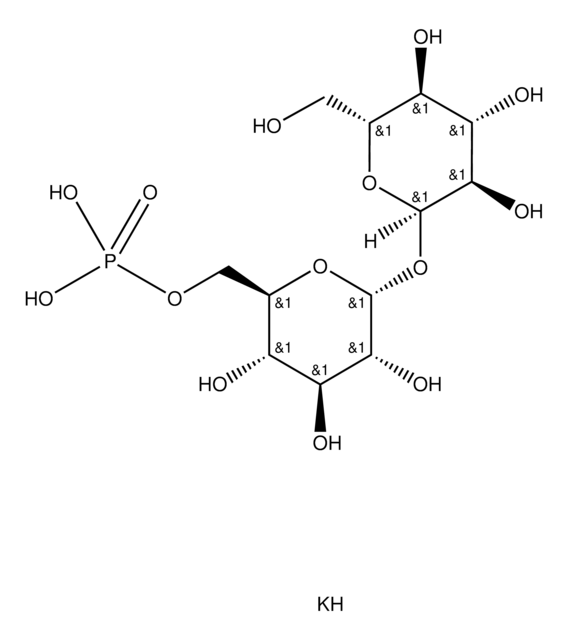T9449
D-(+)-Tréhalose dihydrate
≥99% (HPLC), from starch
Synonyme(s) :
α,α-Tréhalose, α-D-Glucopyranosyl-α-D-glucopyranoside
About This Item
Produits recommandés
Source biologique
Manihot esculenta root (Cassava)
Niveau de qualité
Pureté
≥99% (HPLC)
Forme
powder
Activité optique
[α]20/D 174 to 186 °, c = 1.0% (w/v) in water
Technique(s)
HPLC: suitable
Impuretés
7.3-11.6% water (Karl Fischer)
Couleur
white
Pf
97-99 °C
Solubilité
water: 50 mg/mL, clear, colorless to very faintly yellow
Température de stockage
room temp
Chaîne SMILES
[H]O[H].[H]O[H].OC[C@H]1O[C@H](O[C@H]2O[C@H](CO)[C@@H](O)[C@H](O)[C@H]2O)[C@H](O)[C@@H](O)[C@@H]1O
InChI
1S/C12H22O11.2H2O/c13-1-3-5(15)7(17)9(19)11(21-3)23-12-10(20)8(18)6(16)4(2-14)22-12;;/h3-20H,1-2H2;2*1H2/t3-,4-,5-,6-,7+,8+,9-,10-,11-,12-;;/m1../s1
Clé InChI
DPVHGFAJLZWDOC-PVXXTIHASA-N
Vous recherchez des produits similaires ? Visite Guide de comparaison des produits
Description générale
Application
- in trehalose test to stabilize pharmaceutical products
- as a component of trehalose/sucrose solution for the preparation of J-aggregates
- in the preparation of simulated honey sugar cocktail (SHSC) to study its effect on chemical and thermal stability of proteins
Actions biochimiques/physiologiques
Autres remarques
Code de la classe de stockage
11 - Combustible Solids
Classe de danger pour l'eau (WGK)
WGK 1
Point d'éclair (°F)
Not applicable
Point d'éclair (°C)
Not applicable
Équipement de protection individuelle
Eyeshields, Gloves, type N95 (US)
Certificats d'analyse (COA)
Recherchez un Certificats d'analyse (COA) en saisissant le numéro de lot du produit. Les numéros de lot figurent sur l'étiquette du produit après les mots "Lot" ou "Batch".
Déjà en possession de ce produit ?
Retrouvez la documentation relative aux produits que vous avez récemment achetés dans la Bibliothèque de documents.
Les clients ont également consulté
Notre équipe de scientifiques dispose d'une expérience dans tous les secteurs de la recherche, notamment en sciences de la vie, science des matériaux, synthèse chimique, chromatographie, analyse et dans de nombreux autres domaines..
Contacter notre Service technique





